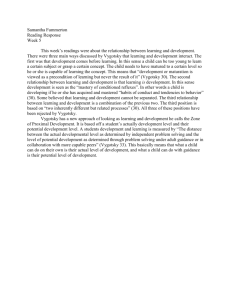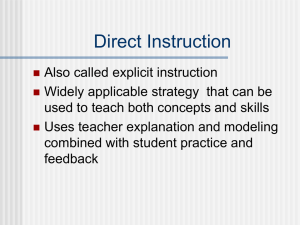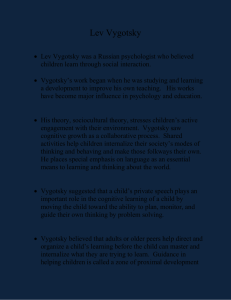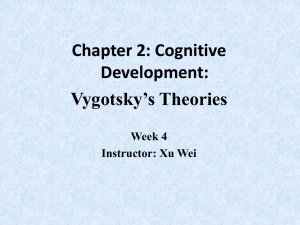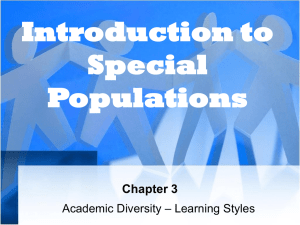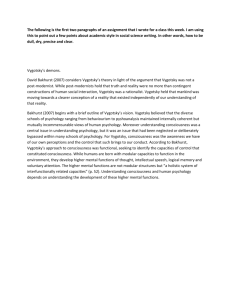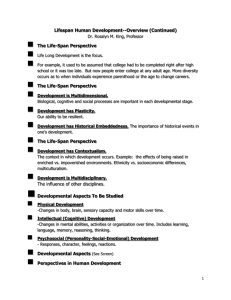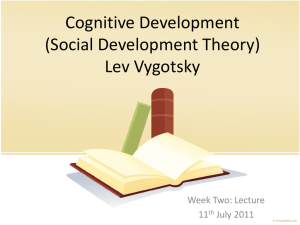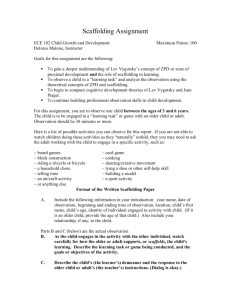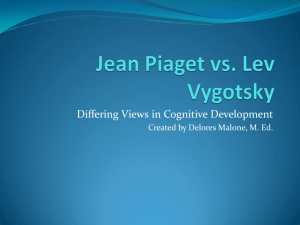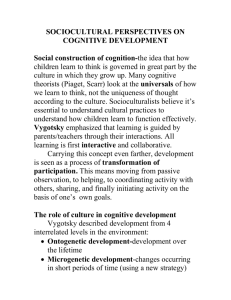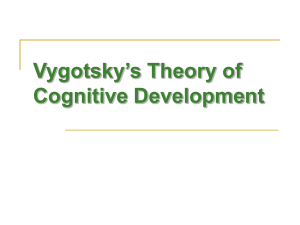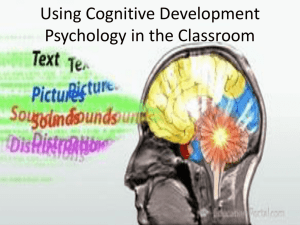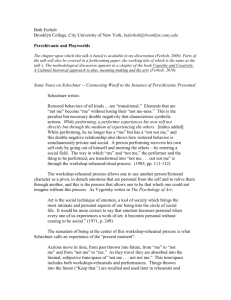Vygotsky. final projecr part 3.doc
advertisement
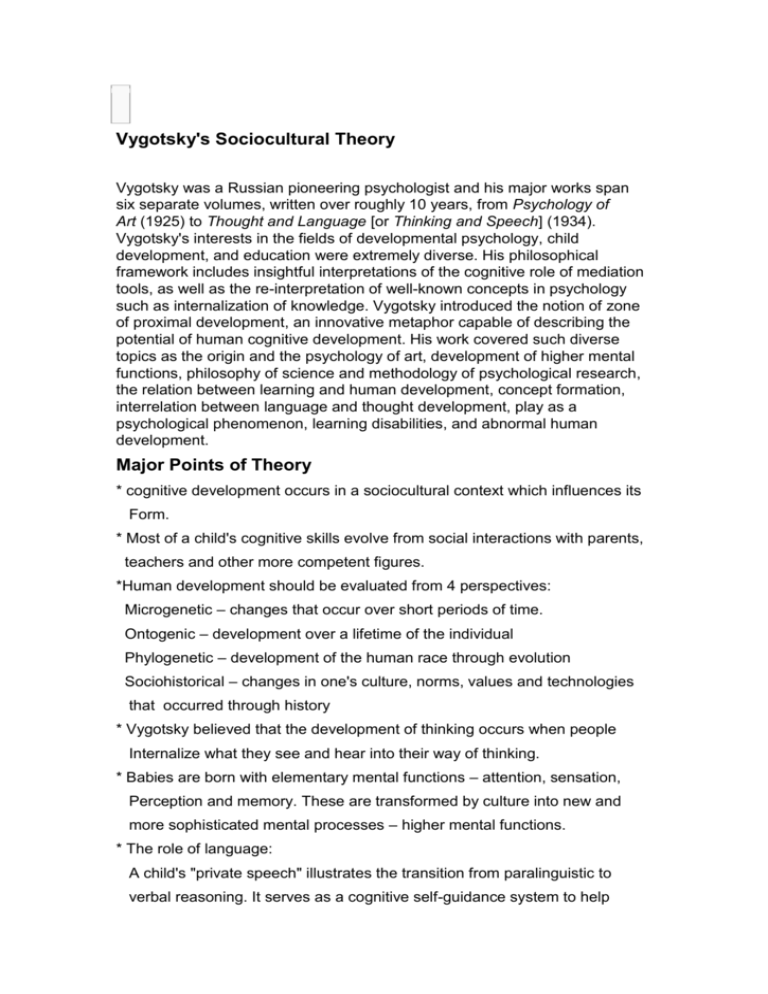
o Vygotsky's Sociocultural Theory Vygotsky was a Russian pioneering psychologist and his major works span six separate volumes, written over roughly 10 years, from Psychology of Art (1925) to Thought and Language [or Thinking and Speech] (1934). Vygotsky's interests in the fields of developmental psychology, child development, and education were extremely diverse. His philosophical framework includes insightful interpretations of the cognitive role of mediation tools, as well as the re-interpretation of well-known concepts in psychology such as internalization of knowledge. Vygotsky introduced the notion of zone of proximal development, an innovative metaphor capable of describing the potential of human cognitive development. His work covered such diverse topics as the origin and the psychology of art, development of higher mental functions, philosophy of science and methodology of psychological research, the relation between learning and human development, concept formation, interrelation between language and thought development, play as a psychological phenomenon, learning disabilities, and abnormal human development. Major Points of Theory * cognitive development occurs in a sociocultural context which influences its Form. * Most of a child's cognitive skills evolve from social interactions with parents, teachers and other more competent figures. *Human development should be evaluated from 4 perspectives: Microgenetic – changes that occur over short periods of time. Ontogenic – development over a lifetime of the individual Phylogenetic – development of the human race through evolution Sociohistorical – changes in one's culture, norms, values and technologies that occurred through history * Vygotsky believed that the development of thinking occurs when people Internalize what they see and hear into their way of thinking. * Babies are born with elementary mental functions – attention, sensation, Perception and memory. These are transformed by culture into new and more sophisticated mental processes – higher mental functions. * The role of language: A child's "private speech" illustrates the transition from paralinguistic to verbal reasoning. It serves as a cognitive self-guidance system to help children become more organized and capable of solving problems. It also serves as means to plan activities and strategies and so, helps developing. In time, "private speech" becomes "inner speech". Words are used to manipulate thought. Zone of proximal development – the difference between the actual developmental level of a child to solve problems independently, and the level of potential development in which he would solve problem under adult guidance or with more capable peers. Children learn best at this zone. Scaffolding – an instructional technique where the teacher provides the learner with the minimal assistance for achievement of understanding. Gradually the scaffolding is removed. Implementation in the classroom Children are active participants in their education. Therefore, teachers in Vygotsky's classroom should: structure the learning activity provide carefully adjusted instruction for each student monitor the learner's progress gradually demand more mental activity to the students promote cooperative work Teachers should promote: thinking and problem solving using the minds – what to think and how to think making discovering while interacting with a tutor and with peers understanding instructions and internalizing information to regulate performance. Fostering of cognitive growth.
